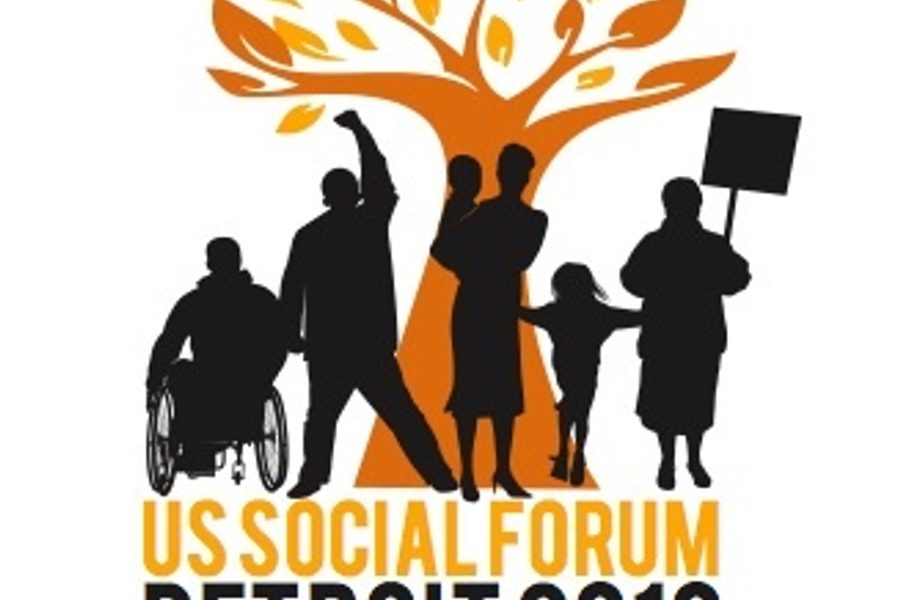
DETROIT — Ashim Roy was part of a factory takeover that led to workers running the factory for six years, and helped push legislation mandating that workers and company owners must jointly negotiate the conditions of a closure.
Emma Delgado is an immigrant domestic worker, among the thousands who suffer frequent wage theft, are forced to work with toxic chemicals and other exploitative conditions. They cannot form a union, but they have formed a nationwide alliance of hundreds and are fighting for a national Domestic Workers Bill of Rights, similar to one that passed this month in the New York legislature.
Saket Soni marched from the Gulf Coast to Washington D.C. with Indian guest workers who escaped from slavery-like conditions at a Mississippi shipyard. They held a month-long hunger strike demanding a federal investigation. Still ignored by federal officials, Soni and other community organizers had to convince the workers to call off the hunger strike and move on to other tactics…which eventually paid off.
These were just a few of personal stories recounted in the process of hashing out labor platforms to be included in the manifesto coming out of the U.S. Social Forum, which is bringing together thousands of activists from around the country in Detroit this week.
Workshop participants brainstormed changes most needed to improve labor in the U.S. These included passage of the Employee Free Choice Act, immigration reform, a public black list of employers who mistreat workers, enforcement of existing labor laws, a federal jobs bill and the criminalizing of labor law violations.
Roy spoke to the packed room in a soft voice, difficult for many in the back to hear. But the facts he relayed so nonchalantly electrified the crowd. “In the 1970s in the first phase of the (plant closing) crisis, we used tactics like sit-ins, and also confinements – we confined the whole management in the factory and locked it,” he noted. A bigger challenge came when workers took over and actually ran one of the country’s biggest factories.
They managed for six years, but ultimately collapsed in part because of moving away from the grassroots solidarity that made the take-over possible and becoming more like the company they had fought in the first place. So progressive workers decided to “go back to the grassroots and rebuild something that was taken away by the ruling class,” he said.
Cindy Marble was among 70 workers fired from the Chicago-area warehouse for Bissell products when they tried to unionize to fight discrimination and other abuses. “In the world of James Brown, this is a man’s world,” said Marble, part of the Warehouse Workers for Justice campaign. “We worked twice as hard and were paid half as much as men.”
Her background was in clerical work, but because of downsizing she ended up driving a forklift and plant truck. “After being transferred to another warehouse I learned how to cross-train, and I was promoted to lead in the damage control department,” said Marble. “I know you’re thinking ‘you go girl, that’s great.’ And it would have been except for the fact with each promotion came no raise, only more responsibilities.”
Soni, an organizer with the New Orleans Worker Center for Racial Justice, described meeting with the Indian guest workers surreptitiously outside their camp, and watching them flee in protest, throwing their hard hats at the gates. The ensuing “long long walk” and hunger strike eventually sparked a Department of Justice investigation, though it took several more years.
“The strike was an incredible act of heroism on the part of a small number of people that galvanized an incredibly large number of people,” he said. “The lesson is, in the course of a campaign you have to be most loyal to the goals of the campaign. At a certain point the hunger strike wasn’t working, and you have to move on. Three years after the escape, two years after the hunger strike, in the Obama era we finally won” – the Department of Justice launched an investigation and the workers were granted legal residence.
“I really believe those militant actions two years ago braced people for another two years of surviving in this campaign, two years of going back to Washington, and two years later we won a significant victory.”
Such persistence and willingness to change tactics and learn lessons along the way is what U.S. Social Forum attendees – who converged in Detroit this week to share countless struggles and highlight the links between them – say is needed to move toward a better world.
For more on the USSF from In These Times, read “Another Detroit is Happening — But Which One Do We Need?
Kari Lydersen is a Chicago-based journalist, author and assistant professor at Northwestern University, where she leads the investigative specialization at the Medill School of Journalism, Media, Integrated Marketing Communications. Her books include Mayor 1%: Rahm Emanuel and the Rise of Chicago’s 99%.








